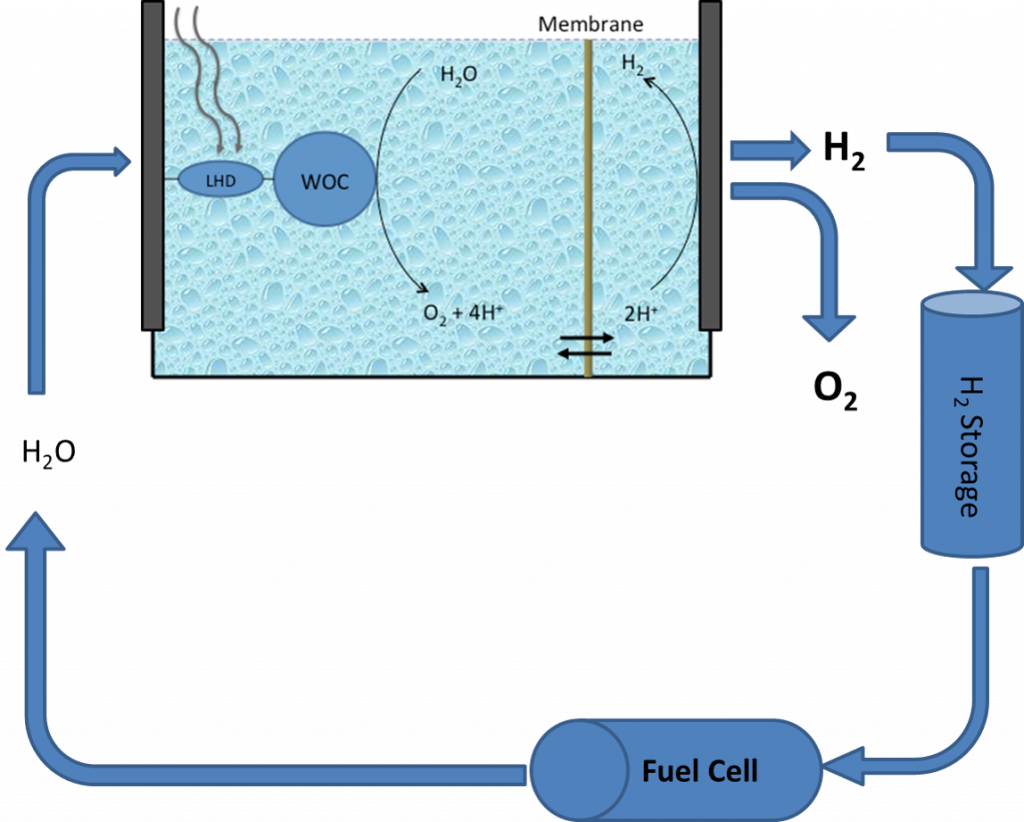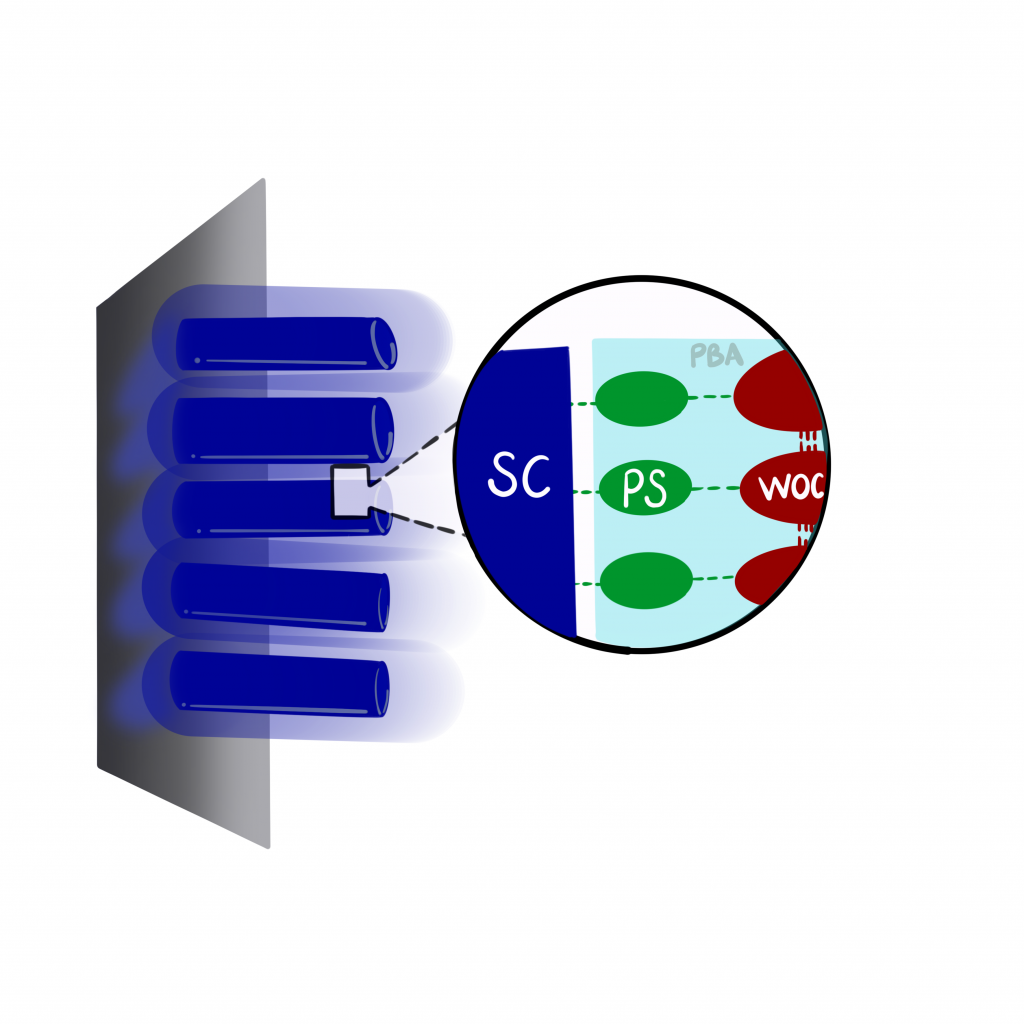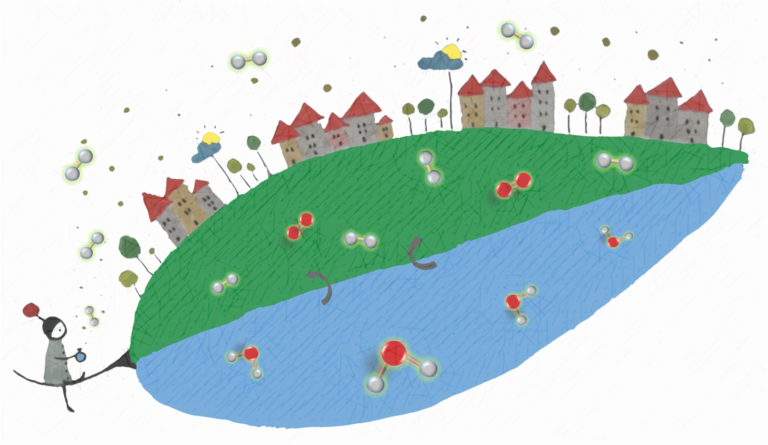The global energy demand, which is expected to increase about at least two times by 2050, could be overcome by discovering alternative methods for energy production other than the widely used fossil-based fuels such as coal, oil, and natural gas. This important task should also be accomplished by introducing a cleaner energy source since CO2, the common byproduct of carbon-based fuels, reached to an alarming value of 380 ppm in the atmosphere, consequences of which are not reassuring for the environment. The hydrogen economy is one of the promising candidates of renewable energy sources since it has high energy content per mass and produces water as a product. One of the main challenges in hydrogen economy is water-splitting, which consists of two half-reactions:

2H2O → O2 + 4H+ + 4e− E = 0.82 V, at pH 7 (1)
2H+ + 2e− → H2 E = 0.41 V, at pH 7 (2)
where E is the reduction potential. Oxygen formation is the most critical step in water-splitting since it is a four-electron process and requires a higher potential than hydrogen evolution step.

Extended inorganic frameworks have been studied in this field due to their stability and easy implementation into devices. Even though promising developments have been made, both fields continue to lag because of a missing link between current research and near future commercialization of efficient materials.

Thus, new class of materials should be prepared and studied systematically to overcome the most challenging problems faced in H2 economy.
